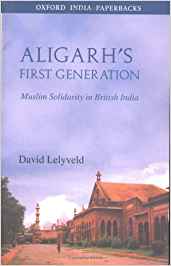The undivided Bengal with its Muslim majority had a Muslim problem which was not exactly the same as the Muslim problem of another Muslim majority province of the pre-Partition days, the Punjab; in fact, the Punjab’s was more a problem of the sense of insecurity felt by its Hindus. The largely coastal presidencies of Bombay (which then included Sind and also Kutch) and Madras (including Malabar district), far removed from the Hindi- Urdu- Hindustani heartland of the country, had pockets in which they had their own Muslim problems. But what became the all-India Muslim problem resulting in the Partition of the subcontinent was really the problem of the Muslim elite of the Hindi-Urdu-Hindustani areas consisting of Delhi, U.P., Bihar and parts of the then C.P., and the problem persists even after the Partition. By giving an account of the evolution of this elite out of the higher formations of the social set-up under the last Moghuls, David Lelyve1d has provided new insights for the better appreciation of the psychological and cultural factors behind the Muslim problem.

Muslim Culture in the Last Century
Girish Mathur
ALIGARH'S FIRST GENERATION: MUSLIM SOLIDARITY IN BRITISH INDIA by Grace Davie Princeton University Press and Oxford University Press, Delhi, 1979, 380 pp., 190.00
Nov-Dec 1979, volume 4, No 3
